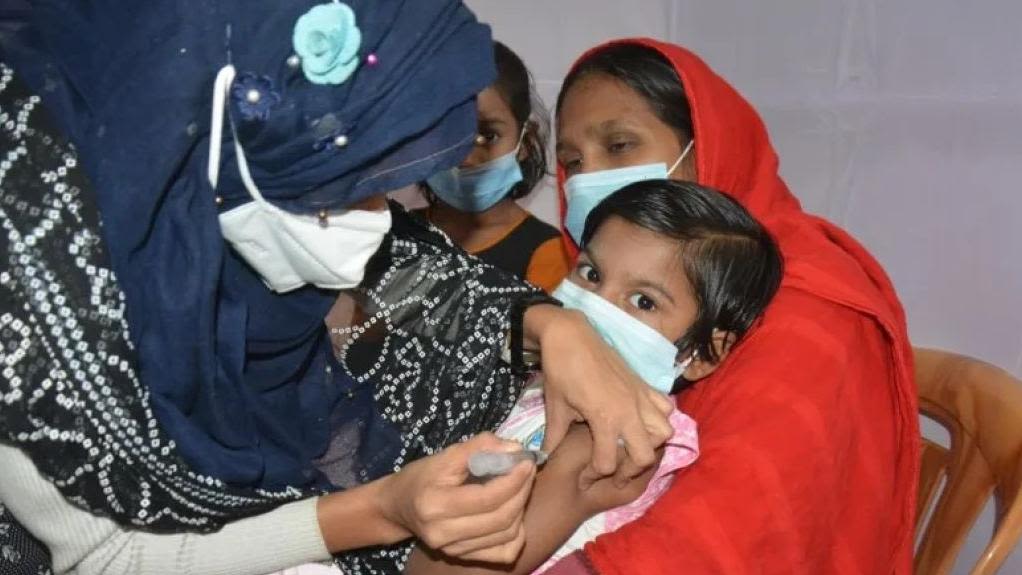

The TyVOID study, published in the Lancet, measured the effectiveness of a single dose TCV in Bangladeshi children over a five-year period and confirmed the high vaccine protection (80-96%) within two years of vaccination in all children.
Three to five years after vaccination, the study found a three-fold increase in typhoid incidence in children who received TCV in 2018/2019 and those who received it in 2021, suggesting a decline in vaccine effectiveness, most pronounced in the very young. The data suggested children vaccinated at two years or older were still well protected (59-85%) at 3-5 years post vaccination however, a more significant decline in protection was seen in children vaccinated at under two years of age, suggesting that a booster dose for these children might be needed for sustained protection.
Xinxue Liu, Associate Professor of Medical Statistics and Epidemiology at the Oxford Vaccine Group, and one of the senior authors of the study, said: ‘Typhoid is a serious and life-threatening enteric fever that remains a substantial public health issue for children and adolescents in low- and middle-income countries. TCV offers the best chance to reduce the burden of typhoid, helping to reduce transmission and limiting further evolution of drug-resistant strains. This study provides additional information for policy makers on longer-term TCV protection and the importance of continued investigation and updated guidance.’
Dr Firdausi Qadri, Senior Scientist at the Infectious Diseases Division at the International Centre for Diarrhoeal Disease Research, Bangladesh (icddr,b), and first author on the study, said: ‘This TyVOID study followed the original TyVAC cluster randomised controlled trial population for another two and a half years after unmasking in 2021. The results indicate a decay in antibody concentrations in different age groups and suggest that a booster dose around school entry age for children vaccinated while younger than 2 years could be considered, to sustain the protection from TCV through the school years when children are at greatest risk of typhoid.’
Read the full story on the University of Oxford website.
more recommended stories
 Circadian Control of Neutrophils in Myocardial Infarction
Circadian Control of Neutrophils in Myocardial InfarctionKey Takeaways for HCPs Neutrophil activity.
 E-Cigarette Use and Heart Attack Risk in Former Smokers
E-Cigarette Use and Heart Attack Risk in Former SmokersKey Takeaways for Clinicians and Nurses.
 36-Week Pre-eclampsia Screening May Reduce Term Risk
36-Week Pre-eclampsia Screening May Reduce Term RiskA New Preventive Strategy for Term.
 Cardiovascular Risk and Sudden Cardiac Death in Diabetes
Cardiovascular Risk and Sudden Cardiac Death in DiabetesRising Sudden Cardiac Death (SCD) Risk.
 Poor Kidney Function and Alzheimer’s Biomarkers Explained
Poor Kidney Function and Alzheimer’s Biomarkers ExplainedPoor kidney function may influence levels.
 Walking Speed Before Hip Replacement Predicts Recovery
Walking Speed Before Hip Replacement Predicts RecoveryNew Evidence Points to a Simple,.
 Neuroblastoma Drug Combo Extends Survival in Models
Neuroblastoma Drug Combo Extends Survival in ModelsA Promising Shift in High-Risk Neuroblastoma.
 How Soybean Oil Impacts Weight Gain and Metabolism
How Soybean Oil Impacts Weight Gain and MetabolismWhy Soybean Oil May Affect Metabolism.
 Coffee and Cognitive Function: Evidence Review
Coffee and Cognitive Function: Evidence ReviewA new narrative review in Cureus.
 Colorectal Cancer Screening Rates Low in Adults 45–49
Colorectal Cancer Screening Rates Low in Adults 45–49Recent UCLA research reveals that colorectal.

Leave a Comment